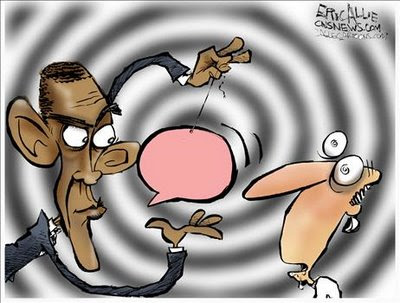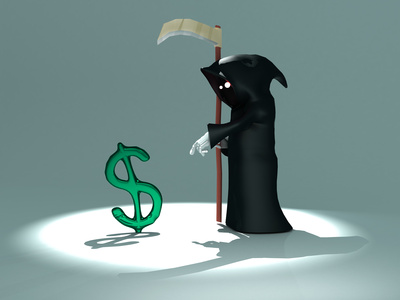Russian President Vladimir Putin, left, and Chinese President Xi Jingping, right, attend a welcoming ceremony in Shanghai, China, on May 20, 2014
Vladimir Putin has a secret agent in his campaign to curb the impact of sanctions on Russia’s economy:
Mr. Yuan.
That’s what skeptical bankers started calling Igor Marich after he introduced yuan trading in Moscow in 2010, when Russia became the first country outside China to offer regulated renminbi purchases.
Now, as sanctions from the west over the conflict in Ukraine prompt more Russian companies to look east for growth, Mr. Yuan has become something of an honorific.
The yuan-ruble trade on the Moscow Exchange, where Marich runs money markets, has jumped 10-fold this year to $749 million in August, though still a sliver of the $367 billion in dollar-for-ruble sales. Yuan buying hit a then-peak of 666 million yuan ($109 million) on July 31, when the European Union penalized Russia’s largest banks, OAO Sberbank (SBER), VTB Group and OAO Gazprombank, over Putin’s support for Ukraine’s insurgency. With EU and U.S. sanctions in place and ties with China deepening, daily trading will soon reach 1 billion yuan, Marich said.
“I believe we can see this result within a year,” the 40-year-old sports enthusiast said in an interview at the exchange in central Moscow, where he started working in 2000, the same year Putin became president.
Marich’s goal may come sooner than he thinks. Russia is considering accepting yuan for gas under the $400 billion, 30-year supply deal that China signed during Putin’s visit to Beijing in May, according to four senior Russian officials and executives who asked not to be identified because a final decision hasn’t been mad
Gazprom Sales
China agreed to prepay for supplies, which are scheduled to start in 2018, to help state-run OAO Gazprom (OGZD) finance the construction of the pipeline that will carry the fuel to the border. Introducing yuan payments into the gas business would lead to an exponential rise in trading in the Chinese currency in Moscow, the people said. China is already Russia’s largest trading partner, with turnover of $89 billion last year, according to Russian customs data, and Putin has set a goal of reaching $100 billion next year.

Gazprom and its Chinese partner, China National Petroleum Corp., the country’s biggest oil and gas producer, have so far declined to comment on the financial details of the accord.
Under Putin, Russia has moved to end what he’s called the “dollar monopoly” that allows the U.S. to act like a global economic “parasite.” The U.S. debt binge that triggered the worst financial crisis since the Great Depression six years ago exposed the need, according to Putin, for a counterweight to the U.S.-led International Monetary Fund and World Bank. The issue became more acute after Putin’s annexation of Crimea in March sparked the first round of sanctions.
BRICS Bank
In July, 70 years after the Bretton Woods agreement formed the Washington-based IMF and World Bank, Putin and his BRICS counterparts from China, India, Brazil and South Africa created their own development lender and reserve fund with the equivalent of $200 billion of combined capital.

That agreement was signed amid a months-long decline in the ruble, which has weakened 14 percent versus the dollar this year, even after gaining 0.8 percent as of 6 p.m. Moscow time today, the most in three weeks. It’s fared little better against the yuan, falling 13 percent.
History shows that fighting the greenback is an uphill battle: the U.S. currency’s preeminence in global finance hasn’t budged in three decades. Almost 90 percent of the $5.3 trillion a day in foreign-exchange transactions last year involved the dollar, the same share as in 1989, data from the Bank for International Settlements show.
Dollar Debt
Russian companies have a total of $90.5 billion of dollar bonds due before 2020, almost all of it borrowed before the first sanctions over Ukraine were imposed. That compares with the equivalent of $19 billion of bonds denominated in euros and $864 million of yuan notes, data compiled by Bloomberg show.
Still, yuan-ruble trading is growing faster than any other pair of currencies on the Moscow Exchange. And unlike the dollar and euro, which attract a lot of speculative trading, almost all yuan buying is for settling commercial contracts, said Andrei Dorfman, a senior currency trader at Bank Moskvy.
Russia’s central bank said in response to e-mailed questions that it considers increasing the yuan’s role in the money market “one of its main priorities.” One way it plans to do that is through a currency-swap with China to boost bilateral trade and investment, Russian central bank Chairman Elvira Nabiullina said in July. The Moscow Exchange said yesterday it will begin ruble trading for Hong Kong dollars to deepen ties with China, though it hasn’t set a start date yet.
‘Like Doping’
“Currency swaps are like doping in sports for expanding foreign trade ties,” Moscow Exchange Executive Director Alexander Potemkin, a former deputy central bank chairman, said in an interview. “Swaps will increase liquidity in Russia, which is currently limited due to western sanctions.”

None of this would have been possible before Putin arrived in the Kremlin because before then the central banks in Moscow and Beijing had little to do with each other, according to Viktor Melnikov, who oversaw the start of yuan trading on the Moscow Exchange when he was deputy chairman of the central bank.
Back in 2000, Russia was “flooded with Chinese goods,” yet only 14 correspondent accounts existed between Russian and Chinese banks, all created during the Soviet era and all with “zero balances,” Melnikov said in an interview. “I thought that was odd, so I moved to change the situation.”
Iranian Yuan
After flying to the Chinese capital for talks with his counterpart, Melnikov, who now heads the Russian-Iranian Council at the Russian Chamber of Commerce, said he traveled to the northern city of Heihe and was “astonished” by the amount of cross-border trade -- 20 Il-76 cargo planes filled with Chinese goods flying into Russia from Beijing every day.

“I asked our businessmen how they paid for their goods and they replied, ‘We bring cash in our pockets,’” Melnikov said. “That’s not the safest way of transferring funds, you know, so I thought we should help these Russian and Chinese businessmen use rubles and yuan instead of cash dollars. We signed our first agreement, on settlements in national currencies in border trade, in 2002.”
The opportunities now for Russia to expand with China and other countries using the yuan, such as Iran, are “enormous,” according to Melnikov.
China is the largest importer of Iranian oil, and it pays in its own currency. As a result, Russian companies exporting to Iran are starting to accept yuan, he said.
Sanctions Strategy
“With Russia being pressured with sanctions, ties with China have become increasingly important,” Melnikov said. “We’ve developed a proper financial infrastructure with China. Now it needs to be expanded.”
Marich, “Mr. Yuan,” said Russian companies are starting to pick-up on the price-saving opportunities made possible by recent regulatory changes both in Russia and in China.
Last year, for example, the Moscow Exchange moved yuan-ruble trading to the so-called basic regime, meaning settlement is “next-day” instead of “today” and banks need only 4 percent to 4.5 percent of the value of their purchases on deposit with the bourse instead of 100 percent.
That’s helped boost the share of Chinese imports bought with yuan to about 8 percent, up from 2 percent in 2010, Marich said. When yuan trading started in 2010, the first session lasted just one hour and only nine banks took part. By 2012, 70 banks were trading yuan. Now the number is 140.
‘Be Concerned’
“Every fourth player on the currency market is working with yuan,” Marich said. “It’s not just the big Chinese banks or Russian banks and brokerages like Sberbank and Otkritie, but also international banks like Raiffeisen and HSBC and regional players such as Bank Primorye or Asian-Pacific Bank.” One company profiting from the trend is Sportsmaster, Russia’s largest retailer of sporting goods.
With trade-financing costs in yuan and dollars now “absolutely comparable,” Sportsmaster is able to cut its purchase costs on Chinese goods by as much as 4 percent, a considerable amount for a low-margin, high-volume business, said Sergey Agibalov, the company’s managing director.
Sportsmaster, based in Moscow, plans to settle 70 percent of its Chinese contracts in yuan within three years, up from about 20 percent now, Agibalov said by phone.
The trend is clear, according to Potemkin, the Moscow Exchange executive. It’ll take some time, but eventually Russia and China will end their reliance on the dollar and euro in international trade, he said.
“I think the West should be concerned with Russia and China moving closer in terms of currencies,” Potemkin said. “So far, everyone thinks this is just a little plaster falling off the dollar wall. But the day may come when the whole thing collapses.”








